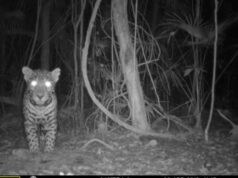 NATIONAL REPORT—Bathroom ventilation systems recently introduced by leading suppliers are making it easier than ever to save energy and money while still keeping bathrooms free of odors and moisture. There was a time when fans were noisy and consumed up to 144 watts. Today they are almost as quiet as a mouse and can use as little as 4 watts—a dramatic difference. Motion sensors are now available with some models and turn off fans left running by guests. With some fans, a humidity sensor is included. This ensures that the fan continues to run until the humidity reaches a pre-set level.
NATIONAL REPORT—Bathroom ventilation systems recently introduced by leading suppliers are making it easier than ever to save energy and money while still keeping bathrooms free of odors and moisture. There was a time when fans were noisy and consumed up to 144 watts. Today they are almost as quiet as a mouse and can use as little as 4 watts—a dramatic difference. Motion sensors are now available with some models and turn off fans left running by guests. With some fans, a humidity sensor is included. This ensures that the fan continues to run until the humidity reaches a pre-set level.
Inefficient fans can cause all kinds of mayhem for a hotel owner. Loud fans can result in guest complaints. Improperly sized or powered fans may not remove enough moisture. This can result in mold and mildew, ruined insulation and wood rot. Some older hotels have no ventilation at all in guestrooms. According to Jim Shelton, national sales manager, Panasonic Home & Environment Co., improperly ventilated bathrooms can result in indoor air quality issues. (In addition to moisture, fans help eliminate volatile organic compounds in the air from materials such as carpeting, paint and adhesives.) Fans left on continuously, however, can suck up a guestroom’s air-conditioned air, resulting in the air conditioner running needlessly. Air conditioners that run more have more maintenance issues. Again, additional costs.
Shelton says that in a typical hotel bathroom, there are either separate switches for the bathroom light and fan, or one single switch that controls both. Both types of controls have their flaws. When there is a separate fan switch, a guest will sometimes forget to turn on the fan. When both the fan and light are controlled by one switch, the fan also runs when the guest forgets to turn the light off. Fortunately, recent advancements in controls are helping to turn the fan off even when the guest forgets to do it.
Ventilation Fan for Lodging
Earlier this year, Panasonic Home & Environment introduced the WhisperWelcome ventilation fan for lodging. The quiet Energy Star rated fan includes a motion sensor. The fan comes on automatically when the guest enters the bathroom and automatically shuts off 20 minutes after the guest has left. The fan is available in models that operate at 50 cubic feet per minute (CFM) and 80 CFM. (One CFM is needed per square foot in a bathroom.) The WhisperWelcome fan is powered by an AC motor.
Shelton says some bathroom ventilation fans now include humidity sensors. California’s Green Building Standards Code (CalGreen) now requires humidity sensing in bathroom fans. Panasonic Home & Environment’s WhisperSense ventilation fans include a motion and humidity sensor. The humidity sensor overrides the motion sensor when the humidity level is still too high. Given that humidity varies by location, the humidity sensor has adjustable set points. The concept is “Motion On” and “Moisture Off.”
“If the fan only had a humidity sensor and for it to really work efficiently, you would have to adjust the humidity sensor seasonally,” Shelton says.
Broan-NuTone LLC offers a 100 CFM humidity sensing fan that integrates a 20 minute auto shut-off timer. The Energy Star rated fan includes Sensaire technology that detects rapid increases in moisture levels at the ceiling. The fans turn on and off automatically to help prevent cosmetic and structural problems associated with excess moisture.
Delta Products Corp., as part of its breez ventilation fans line, also offers a fan with a humidity sensor—the Delta BreezSignature VFB25ACH. The DC motor self-adjusts based on humidity levels. The fan includes blue and amber indicator lights to show humidity sensor and full speed modes.
Wall-Mounted Sensor
Taking humidity control one step farther, Panasonic Home & Environment offers a wall-mounted WhisperControl Condensation Sensor. It is programmed to turn on the bathroom fan based on condensation detection. It detects hot air and humidity and then determines the dew point, the temperature at which the water vapor in the air condenses into liquid. By accurately recognizing dew point, the sensor turns on the ventilation fans when necessary, allowing for energy efficient function in all seasons for all climate zones.
Those shopping for new bathroom exhaust fans should at least consider those with an EPA Energy Star rating. Energy Star qualified ventilation fans use 60 percent less energy than standard models. The Energy Star label is required for any fan that will be used to help earn LEED points. Fans with DC motors are more energy efficient than those running on AC because fan speed can be controlled easier. Panasonic Home & Environment’s WhisperGreen models, for example, which include a brushless DC motor, are up to 871 percent more efficient than Energy Star standards.
When shopping for a fan, of course the physical size of the fan is important to consider. Also look for certification from the Home Ventilating Institute which tests for air flow and sound. A “sone” is the measurement for sound. One sone is half as loud as two sones, and is equivalent to a quiet refrigerator. Some bathroom ventilation fans include compact fluorescent fixtures and night lights. Be sure to ask about the wattage of these.
Glenn Hasek can be reached at editor@greenlodgingnews.com.






